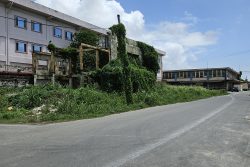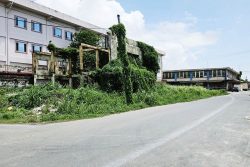The name of this newspaper was suggested by John Simon de Freitas at an informal meeting in the house of founder, David de Caires, and it resonated with all those who were present. As a consequence, our masthead carries the image of the Stabroek Market clock, and one of our earliest features was about the ‘Big Market’ as it is known.
Today we look back briefly at the origins of the market, and try to recapture the spirit of what it has become today.
Stabroek Market sits on land that has had a longer association with Georgetown than almost any other site. The first official government structure which was erected either there or in its vicinity, was a Brandwagt, or signal station. This was at a time when the Dutch West India Company owned the colony of Demerara, and the governor wanted advance warning of all boats coming into the river, especially enemy vessels. The Dutch authorities at that time had their headquarters up the Demerara River on the island of Borsselen, not far from where most of the plantations were located, and they didn’t want to be taken by surprise.
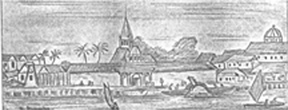
The Brandwagt was built in 1748, not all that long after the first Demerara plantations were laid out, and its builders obviously did not have it in mind that it should withstand attack, because it was made of wood. A sergeant was the senior officer in charge, and he had five soldiers under his command.
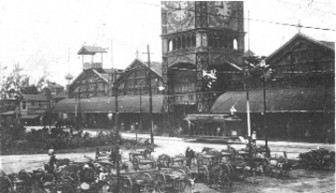
It is possible that the Africans from the plantations came there on Sundays to sell their produce either to the soldiers, or more likely to the sailors on the ships who had to stop at the Brandwagt before proceeding to the plantations upstream, but it is unlikely that there would have been an actual market at this point.
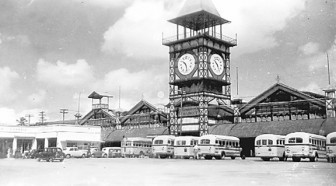
Eventually, of course, the plantations moved downstream, the buildings on Borsselen fell into a state of disrepair, and finally the British seized Demerara in 1781. They quickly decided they wanted a capital at the mouth of the river, and wasted no time in constructing a fort (its precise location is not certain) as well as an office which they erected next to the Brandwagt in the Stabroek Market area.
Their grandiose schemes did not progress much further, because the French booted them out in 1782. However, the French did see the advantages of adopting the British decision about a capital, and in the two years they spent here they wasted no time in implementing it. As a consequence, a new town was born corresponding with what is now the ward of Stabroek.
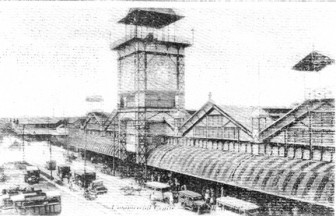
In 1784, back came the Dutch again, to find they had a capital in a location they really hadn’t planned on. Their vague ideas before the British and French came, had centred on building one either between Pearl and Coverden on the East Bank, or near to what is now Wales on the West Bank. Clearly it made no sense pursuing either of these schemes at that point, so they accepted the fait accompli, and wasted no time in giving their new capital a name. On September 14, 1784, By Resolution of the Ten (the Board of the Dutch West India Company), the first urban area in this country was invested with the name ‘Stabroek’ after the President of the company, a man named Nicolas Geelvink, Lord of Castricum, Backum and Stabroek.
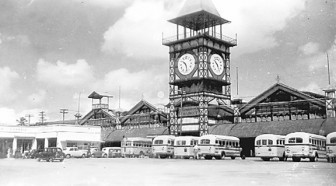
According to the nineteenth century historian James Rodway, there was no mention of a market until 1792, when the Court of Policy agreed to allow Africans to sell plantains in “Stabroek Market” on a Sunday, but they were not allowed to sell ‘dry goods.’ He was of the view that the actual site was either where St Andrew’s Church is now, or near where the Ice House (Banks DIH) is located. He goes on to say that because of the noise created so near to where church services were held, the market was moved in 1793 to the land where Smith’s Church in Brickdam is now. This, it turned out, was very inconvenient, and another site which he does not identify was tried, until it was brought back once again to its old spot.
Nobody at this stage knows much about the market, although in 1837 the price for 2 pounds of yams was the equivalent of 10 cents; 2½ pounds of tannias were also 10 cents; and 12-15 plantations could be bought too for 10 cents. The best beef sold for the equivalent of 20 cents a pound, while pork was the same. Transactions were conducted in the open, although there were some sheds. Rodway says that the first covered market was built in 1842 by the Town Council, which raised a loan of $50,000 to pay for it. That market was on the site of the current one, and sold everything imaginable, including blocks of ice which were brought down from Halifax.
As is much better known, the current market was designed and built by an American engineer named Nathaniel McKay, and it was opened on November 1, 1881. The entire project including the river wall and the foundations cost $200,00, which was admittedly worth infinitely more at the time than it is today.



